By Roger Rittmaster
October 1, 2023
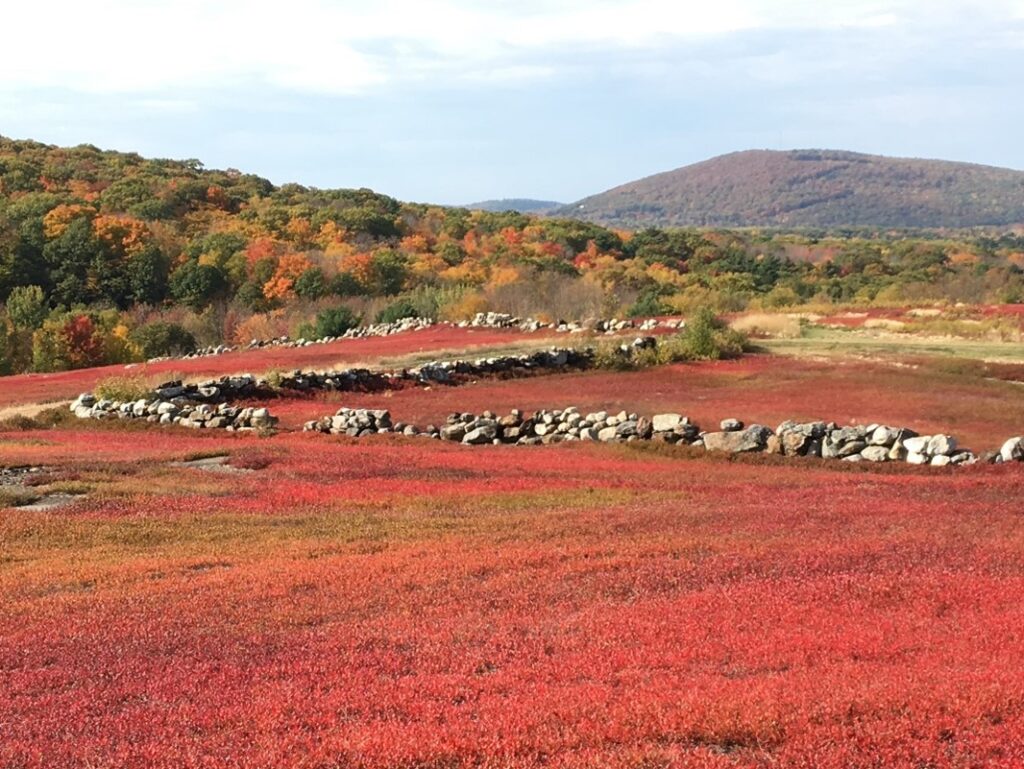
Red maples are spectacular in the Fall, but if you want to see the most intense leaf colors in Midcoast Maine, visit a blueberry barren. Add in a background forest of evergreen and mixed deciduous trees, and you’ll have the full range of nature’s autumn color palette.
Deciduous trees and shrubs lose their leaves in the fall. Throughout the summer, the leaves have been factories for converting the sun’s energy into sugars that the plants can use to grow. Chlorophyll, the molecule responsible for harnessing the energy for this conversion, absorbs light best in the red and blue portions of the spectrum, whereas green light is reflected. Therefore, leaves that are high in chlorophyll appear green. Most plants have two different forms of chlorophyll (A and B), with peak light absorption at different wavelengths, allowing the leaves to absorb more of the sun’s energy.
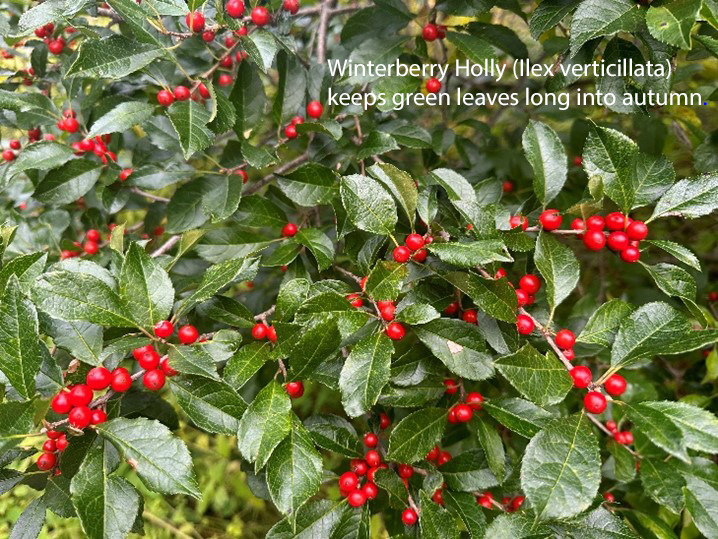
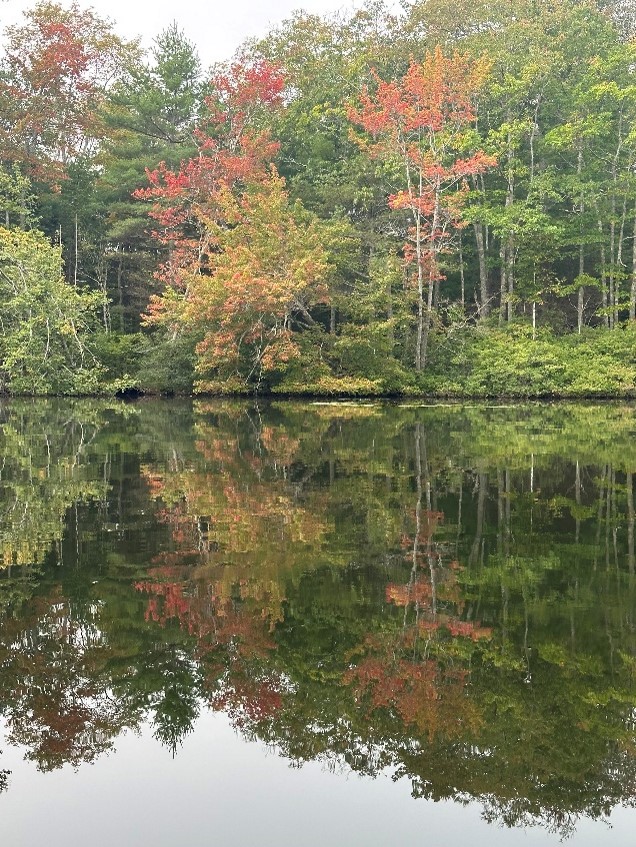
As the days shorten in fall and the sun is lower in the sky, photosynthesis decreases. The maintenance of leaves and production of chlorophyll requires energy. When the leaves produce less energy, they no longer benefit the trees and can cause harm. Thin leaves are easily destroyed by freezing temperatures, and a leaf-laden tree is more easily damaged in a windstorm. Evergreen trees also shed old leaves, but this occurs gradually throughout the growing season rather than all at once.
Leaf loss is an active process called abscission. The tree no longer sends water to the leaves, and a layer of cells grows between the leaf stem and the twig, eventually severing the connection between leaf and twig. The term abscission (verb: to abscise) is not specific to leaves. It refers to any process in which part of an organism is intentionally lost, such as a flower after fertilization or the tail of a salamander when grabbed by a predator.
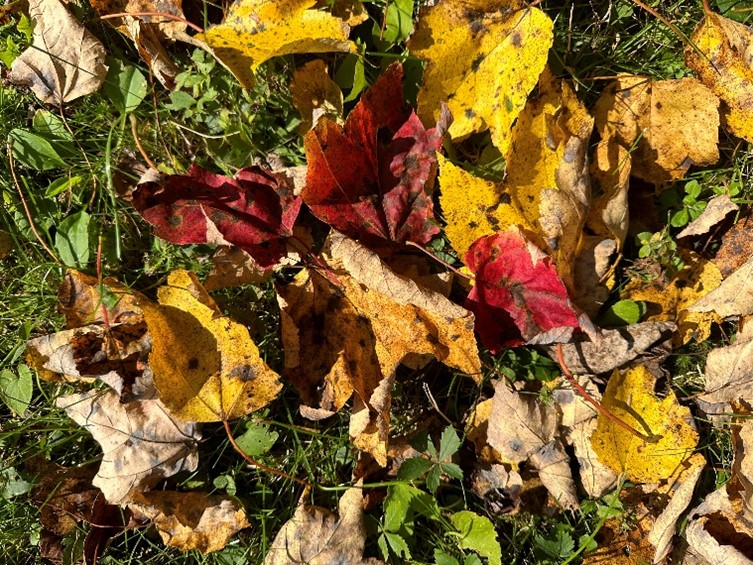
Chlorophyll synthesis is an energy intensive process. While chlorophyll is continuously produced in green leaves exposed to light, synthesis decreases during darkness, and prolonged darkness leads to a reduction in green color in leaves. Chlorophyll production is stimulated by a group of plant hormones called cytokinins, and the loss of chlorophyll in leaves in autumn can be attributed to a decrease in cytokinin in the leaves.
The importance of cytokinins was demonstrated in a fascinating study of a leaf miner. Leaf miners are insects whose larvae live inside leaves. To maintain viability as leaves are dying in the Fall, some leaf miners induce continued chlorophyll production surrounding their leaf mines. In one leaf miner, the moth Phyllonorycter blancardella, this appeared to be due to symbiotic bacteria (Wolbachia) present in the moth larvae, which stimulated the production of cytokinins in the leaf. In the study, if the bacteria were eliminated with antibiotics, chlorophyll synthesis declined and the survival of the leaf miners was reduced (https://www.ncbi.nlm.nih.gov/pmc/articles/PMC2894905/).
In the photo below, small larvae at the base of Quaking Aspen leaves (Populus tremuloides) have stimulated areas of persistent chlorophyll production in and adjacent to the leaf mines.
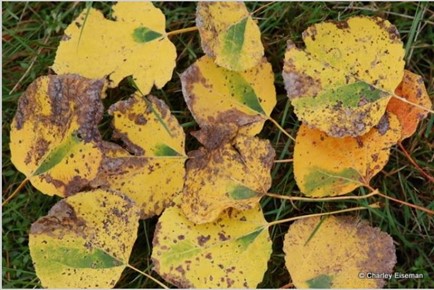
That’s enough about chlorophyll! How about those beautiful colors in some leaves in October? Two groups of molecules are responsible for the colors: carotenoids and anthocyanins. As chlorophyll degrades in fall leaves, the nutrient content of the chlorophyll is resorbed by the tree. Both carotenoids and anthocyanins protect the leaves from excessive sun exposure and damage during this period of involution, maximizing the tree’s ability to resorb those nutrients.
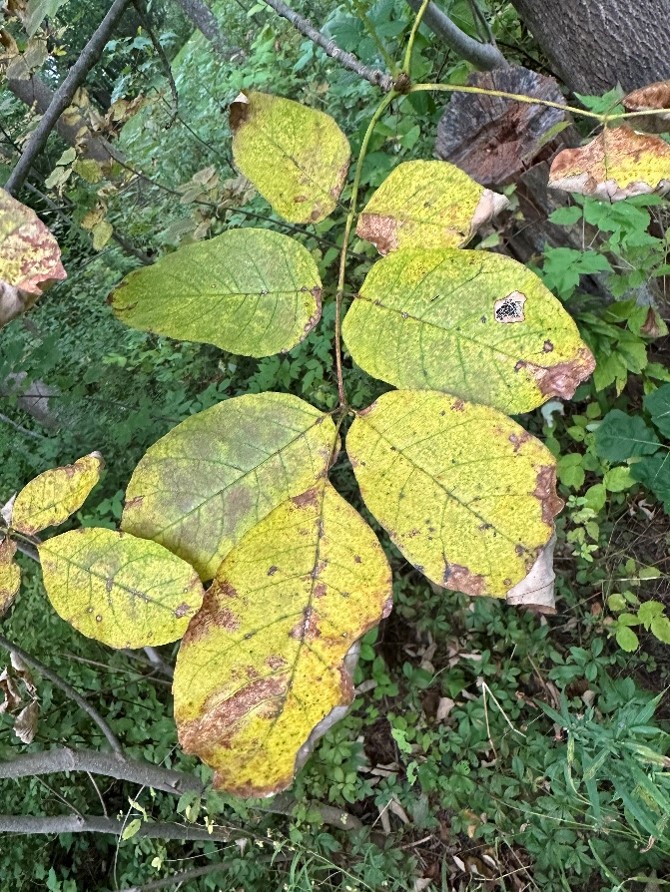
Carotenoids are present in leaves throughout the growing seasons and are responsible for the yellow and orange colors in the fall. Their colors are normally masked by chlorophyll’s dominant green color. The most abundant carotenoids are β-carotene and lutein. β-carotene is responsible for carrot’s orange color. Lutein is yellow at low concentration and orange-red at high concentration. Carotenoids serve to enhance energy capture under low light conditions by absorbing wavelengths of light not captured by chlorophyll, such as green. Under strong light conditions, they have the opposite effect. They help to minimize cell damage when there’s too much incoming light, dissipating the excess energy as heat. The prolonged presence of carotenoids in involuting leaves helps to protect the leaves from excessive sun exposure when chlorophyll is no longer present.
Anthocyanins, primarily cyanidin-3-O-glucoside, impart a dark red to purple color to involuting leaves, by absorbing yellow-green wavelengths of light. Although they are minimally present during most of the growing season in deciduous leaves, they are particularly abundant in the leaves of some species in autumn. As with carotenoids, they are believed to protect against leaf damage while nutrients are being actively resorbed into the trees.
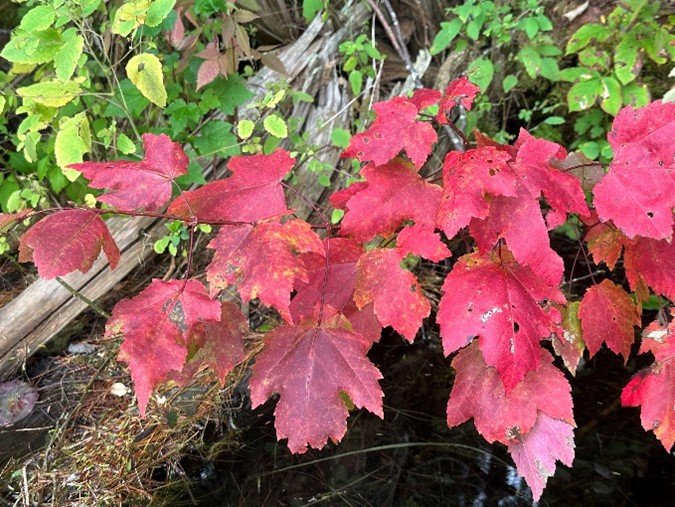
The actual colors one sees in Fall leaves are the result of the combination of residual chlorophyll, and the amount and type of carotinoids and anthocyanins present. The preceding explanation of autumn leaf colors might be accurate, but so much is left unexplained. If carotenoids and anthocyanins are so important, why are they prominent in some species such as red maples and not in others? Why is their distribution so uneven, as in the Red Maple leaves (below left) or between branches of a Silky Dogwood (below right)? Are the colors themselves important (some scientists have hypothesized that the bright colors diminish insect attacks) or are they merely an accidental attribute of their molecular structure?
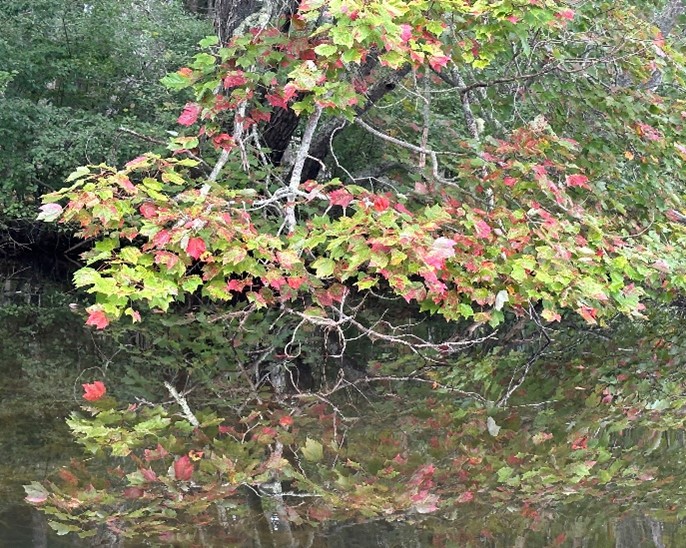
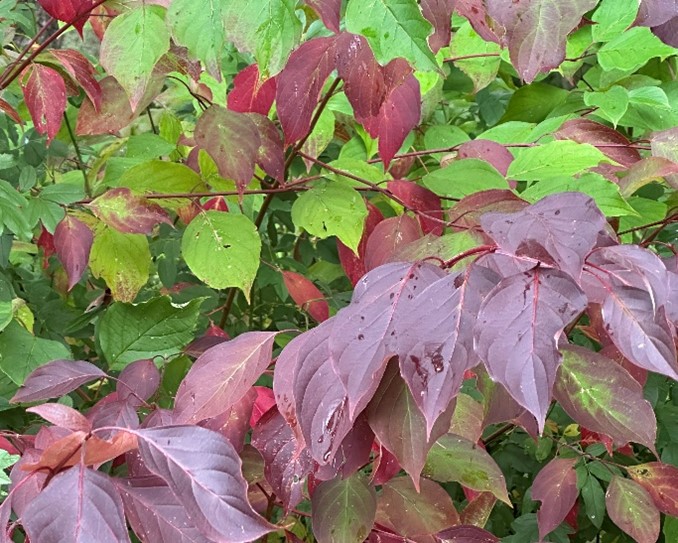
Hopefully, this information gives you a greater appreciation of fall foliage. On the other hand, sometimes it’s better to just lie back and enjoy the show!

